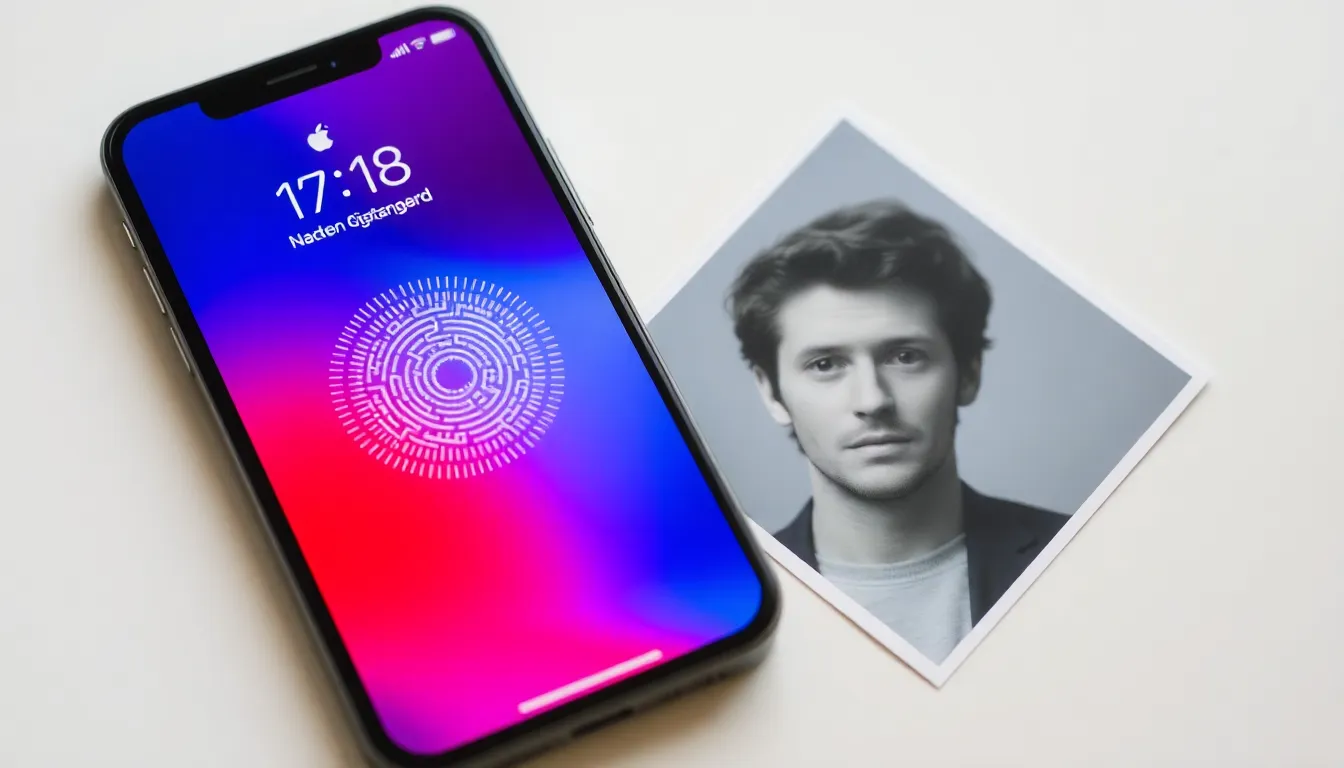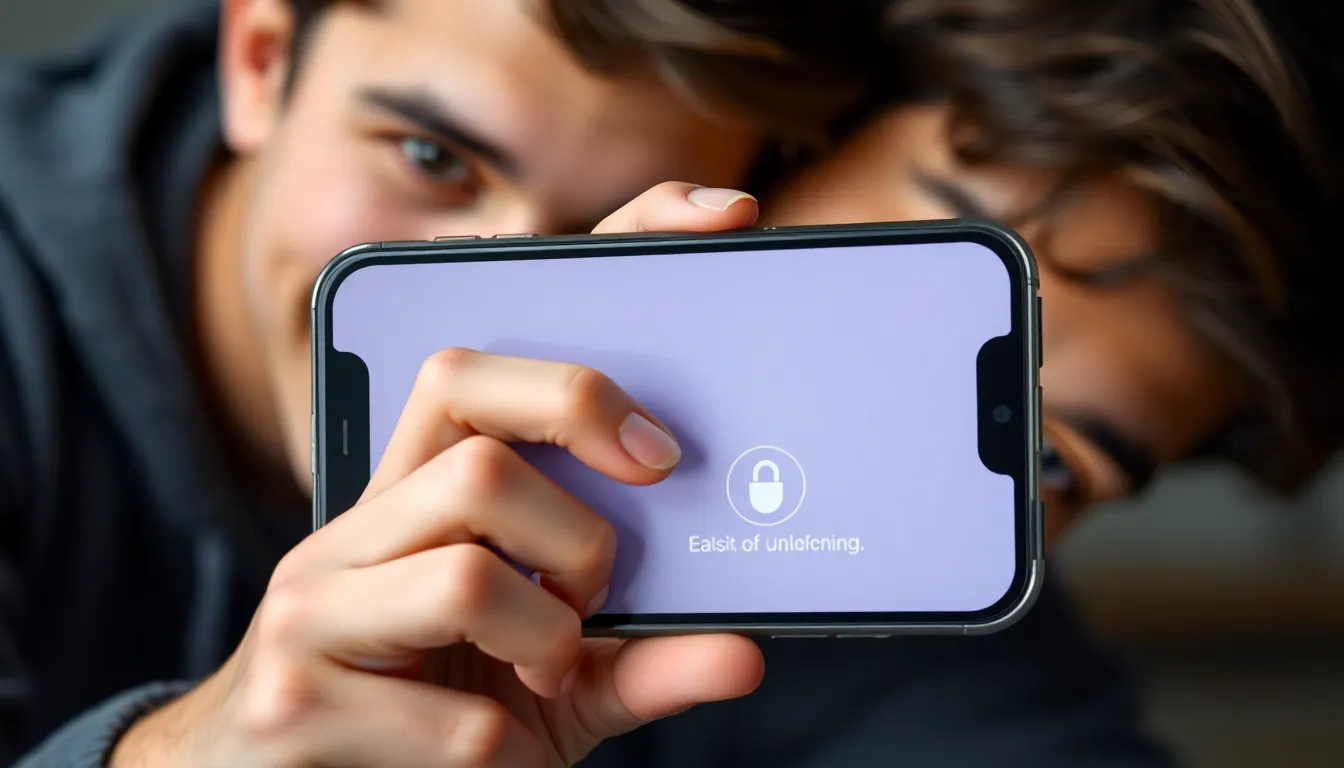Imagine this: you’re locked out of your iPhone, staring at that dreaded passcode screen, and you wonder if a simple picture could save the day. It sounds like the plot of a techy sci-fi movie, but it’s a question that’s crossed many minds. Can a mere snapshot unlock the secrets of your digital life?
In a world where technology often seems like magic, the idea of bypassing security with just an image is both intriguing and a little bit absurd. While it’s tempting to think that a well-timed selfie or a family photo could do the trick, the reality is a bit more complicated. Let’s dive into the quirky world of iPhone security and find out if your favorite picture has any chance of becoming your new best friend—or just another locked door.
Table of Contents
ToggleUnderstanding Face ID Technology
Face ID technology represents a significant advancement in smartphone security. This system utilizes facial recognition to unlock devices, enhancing user experience and protection.
How Face ID Works
Face ID employs a TrueDepth camera that captures detailed facial data. This technology projects over 30,000 invisible dots onto the user’s face, creating a precise 3D map. Then, a neural engine processes this information, comparing it against stored facial data to grant access. With advancements in machine learning, Face ID adapts to changes, such as shifts in hairstyles or facial hair. This adaptability helps maintain accuracy in various lighting conditions.
Security Features of Face ID
Face ID incorporates several security features that make it robust. It uses a secure enclave to store facial data, preventing unauthorized access. Additionally, a spoof detection mechanism identifies attempts to unlock devices with photos or masks. Users benefit from adaptive recognition, which enhances security as the system learns and evolves. Face ID operates efficiently, maintaining responsiveness while prioritizing user privacy and data protection.
Exploring the Vulnerabilities

Understanding whether a picture can unlock an iPhone requires examining the nuances of Face ID technology and its vulnerabilities.
Can a Picture Unlock an iPhone?
Face ID is designed to provide robust security against unauthorized access. Difficulties arise when attempting to unlock iPhones using photos since Face ID relies on 3D facial recognition, making flat images ineffective. Access through a photograph remains highly unlikely due to the system’s ability to distinguish between real faces and representations, such as photos.
Real-World Examples and Tests
Testing has demonstrated Face ID’s resilience against photo-based unlock attempts. Scenarios where individuals tried to deceive the system using printed images or screens have consistently failed. Experimentation with masks and other deceptive methods similarly showed limited success, reinforcing that real facial features are essential for unlocking the device. The ongoing improvements in Face ID technology focus on enhancing its defenses against potential hacking techniques involving photographic representation.
Alternatives to Face ID
While Face ID offers a secure unlocking method, other options exist for accessing an iPhone.
Fingerprint Recognition
Fingerprint recognition provides a reliable alternative to Face ID. Touch ID scans a fingerprint using capacitive sensors, ensuring precise recognition. The technology captures unique patterns in a fingerprint, granting quick access to the device. Users can enroll multiple fingers for convenience, making it easier to unlock with different fingers. This system operates effectively even in varying conditions, such as wet or dry fingers. With the rise of new iPhone models prioritizing Face ID, older models still utilize Touch ID for added security options.
Traditional Passcodes
Traditional passcodes serve as a fundamental security measure for iPhones. Users can set a numerical code, typically 4 to 6 digits long, to unlock their devices. When a passcode is entered, it prompts immediate access to the home screen. Customization options exist, allowing users to create alphanumeric codes for increased complexity. In situations where biometric methods fail, passcodes present a dependable backup. Security relies on individuals creating unique combinations to avoid unauthorized access. Consequently, traditional passcodes remain a practical choice for those who prefer an alternative to biometric systems.
Implications for Users
Understanding the implications of whether a picture can unlock an iPhone sheds light on both privacy and security matters that users face.
Privacy Concerns
Using a photograph to bypass security raises significant privacy issues. Facial recognition integrates personal data into the unlocking process, which can be susceptible to misuse. Unauthorized access to devices becomes easier if security measures falter. Users may unknowingly expose sensitive information stored on their devices through complacency about security features. Trust in technology hinges on effective protection against potential breaches, requiring ongoing updates and improvements in security systems. Technology developers must prioritize user privacy to maintain confidence in facial recognition methods.
Security Awareness
Security awareness plays a crucial role in protecting personal devices. Users must understand the limitations of Face ID, particularly regarding flat images as ineffective tools for unlocking. Familiarity with alternative security measures, such as Touch ID and passcodes, enhances overall device security. Users benefit from adopting diverse methods for protection, reducing vulnerability against unauthorized access. Awareness of potential hacking techniques reinforces the importance of biometric security and the need for continuous advancements. Educational resources can further equip users with knowledge about best practices for securing their devices.
The idea of a picture unlocking an iPhone may seem appealing but it’s clear that modern security technology has evolved to prevent such scenarios. Face ID’s reliance on 3D facial recognition ensures that flat images can’t bypass its defenses. This technology prioritizes user privacy and data protection while remaining robust against unauthorized access attempts.
For those seeking alternatives, options like Touch ID and traditional passcodes provide reliable methods for device security. Understanding these technologies and their limitations is essential for every user. By staying informed and adopting diverse security measures, individuals can better protect their personal data and enjoy peace of mind in an increasingly digital world.

